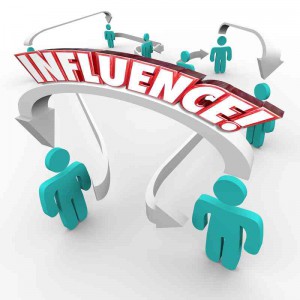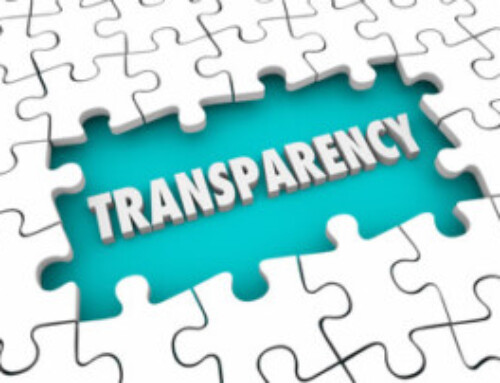 A potential client called recently to engage the services of WAV Group Communications. Typical to most initial conversations with many potential clients in the real estate industry is the misunderstanding of what public relations is. I assured him it was much more than simply writing a good news release and publishing it on a paid wire. That topic alone is another column.
A potential client called recently to engage the services of WAV Group Communications. Typical to most initial conversations with many potential clients in the real estate industry is the misunderstanding of what public relations is. I assured him it was much more than simply writing a good news release and publishing it on a paid wire. That topic alone is another column.
But the conversation reminds me of how little time PR people take to educate our industry about what PR is. To help in this effort, let’s explore a crucial area that shows how powerful strategic PR can be using leverage.
3 Ways to Leverage Your PR
A major component of public relations is publicity. Once you successfully gain the attention of news media and they run a story about you, your firm or your new product, a lot of companies just sit back and move on to the seeking out the next reporter for the next story.
Don’t do that, because once a story runs, you’ve just gotten started. This is where leverage plays a crucial role is strategy public relations. There are three crucial channels you must leverage: External, Internal and Influencers.
External Leverage
The entire reason you sought publicity in the first place was for a specific purpose, right? Perhaps to help raise awareness, drive sales, incrementally increase revenue, introduce a new product, create a buzz, build moment and interest – whatever your goal, you should take that coverage and leverage it.
For example, imagine a story that runs in the NY Times that mentions your new product. Your first act of leverage is to socialize it. Share it through your social media channels: Twitter, LinkedIn, Facebook, Instagram – focusing on the ones you use regularly, even if it is only one. Using popular hash tags are crucial to this act of leverage. Mastering these will exponentially increase your total audience reach.
This is where most folks stop. What they forget is not only does your target audience love the NY Times, but so do the major TV news networks. And other newspapers, trade reporters, and bloggers who follow your industry. PR pros will use this story as leverage to gain the attention of other media outlets. The Times coverage not only legitimizes your news, it gives you the opportunity to find another angle to build on what they have reported, giving other media outlets a fresh hook that will earn their attention.
Then comes more leverage opportunities; Repurposing the content. Share the Times story and give it a long shelf life; Feature it on your website, add it to your samples of key news stories that your sales force share with clients, embed it at the end of your email signature of all your folks after a p.s. that says “Did you see us in the NY Times?” and hotlink your text.
There are many more ways you can leverage with your external audiences. These are just a few, but you can see that one story can have a far greater impact if you think strategically about how to leverage it.
Internal Leverage
This is the one area that’s really vital and often done as a second thought. It should be baked into your primary activities when it comes to leveraging your PR. That’s because your employees, your investors, your management team and your board of directors all share in your success. They are your most interested parties and you need to make them a primary audience when it comes to leveraging news coverage.
Here’s why: They can enormously extend your reach. When you encourage them to share the NY Times story, and that includes specifically asking them to tweet it out or share it on Facebook, you are multiplying its impact and you are reaping benefits you can’t get any other way.
That’s because when you involve your employees in sharing key news coverage, they are not only proud to work for a company that’s earned the attention of the NY Times, they are connected to the process. When someone has a role in the process, it makes them that much more committed. News coverage leveraged internally helps build employee morale and it fosters commitment.
Talk about it at a staff meeting, leave a hard copy printed out in the coffee room, and recognize employees who do the best job in sharing your news with others. Don’t ever forget your internal leverage.
Influencer Leverage
This area takes the most work, but can yield the greatest return for your effort to leverage these three key channels. Every industry has a small group of people who can help you connect to thousands if not tens or even hundreds of thousands of people. They may be bloggers, or folks who have thousands of followers on a particular social media channel, or they might be key industry consultants or industry experts who speak to the top decision makers in your industry – or your key audiences – on a regular basis. All of these people can be called influencers.
Influencers often yield more power and impact than they themselves recognize, and collectively, when you target them and solicit their help in sharing a key news story, the results can be truly remarkable. More importantly, even if the information you share with influencers doesn’t have an immediate impact, chances are it will over time. At the very least you have kept you, your company and your new product in front of this group.
This is where the art of public relations excels, and that is in building relationships, both in person and remotely. Building strong relationships with key influencers takes time. You have to earn their trust and prove that you can provide them information, on a consistent basis, that doesn’t waste their time, but has value. The key with this group, like it is with reporters, is being a resource. You can’t just focus on what’s in it for you; You must always focus on what’s in it for them. But when you establish a relationship, influencers will help you when asked, and the results can often be more powerful than the time you spent leveraging both your internal or external channels.
If you have a question about Public Relations or a topic to suggest, feel free to email at kevin@wavgroup.com.





Yes, a couple of questions on very good article:
1. what is “paid wire”?
2. should you ALWAYS make every effort to respond to media request for comments, article and so on…even if feel its not for me or what do I know?
3. when told a deadline is a hard stop…really so, drop everything for opportunity to respond or always a bit flexible?
4. is domestic exposure enough or is global ALWAYS better?
5. should email reply be writer or PR?
6. finally if you are bit light on request, is it cricket to research online to strengthen your reply?
1. Paid wire: There are two types of wire services, those that report the news (Reuters, Associated Press, Bloomberg) and syndicate this news to other news outlets via a service known as a “wire” service. Then there are paid wires: Marketwired, PR Newswire, BusinessWire and PR Web are the dominant ones. Companies pay a fee to have their news releases issued on this “wire” that is sent to news outlines. Wire is a really dated term as everything today is went via the Internet, but before the Web, these transmissions were through wires to terminals.
2. Always? I tend to think, unless it is used to describe telling the truth, absolutes are a poor choice: using always is usually a poor word choice. But let me clarify my point (I believe is found in my previous post about working with reporters): You reply without answering the question. If you tell the reporter it is not your area of expertise, that’s completely fair and reporters will appreciate that. I would recommend if you have someone that can answer the question, provide that source. If not, reporters can find someone who does know the answer. The key point is to make an effort to respond even if the response is I can’t help you today because I am unavailable and wish I could.
3. Great question. If the deadline is a hard stop, that just means if you pass, you won’t be part of that story. It’s a choice you can make. Do know that if you consistently pass on stories, reporters are likely to eventually pass on you as a source.
4. Global or domestic: If you business isn’t global, I can’t see how it could benefit you, but in real estate, the impact of Global buyers can be significant; that said, the impact isn’t in all markets, mostly big cities and the coasts, historically.
5. Writer or PR: I’m a little unclear, but my counsel is that if you are replying to a reporter and have a PR person to review your answers, getting a second set of eyes and a second perspective is a good idea. PR folks should be great writers: It should be on of the top strengths.
6. The last question, I think is about “brushing up” using online research. That’s really a great idea as it can freshen your memory. It’s best if you are going to quote facts, however, to provide the reporter the source.
I hope this helps.
Thank you for your kind words and your great questions!
Kevin Hawkins kevin@wavgroup.com